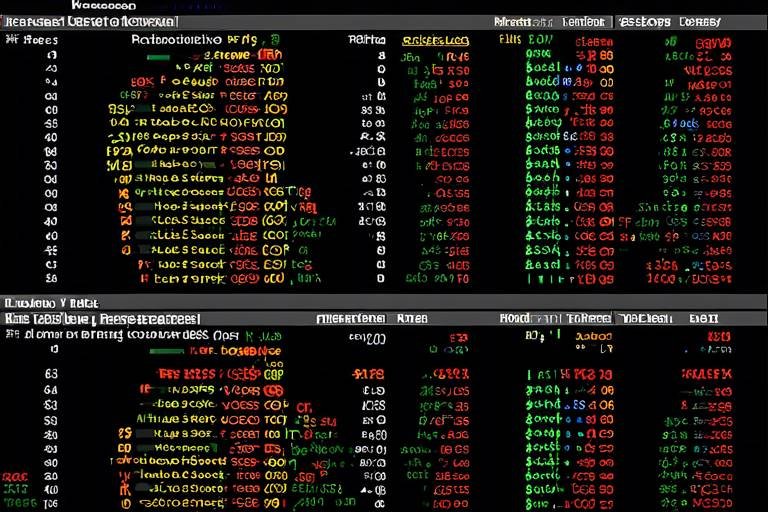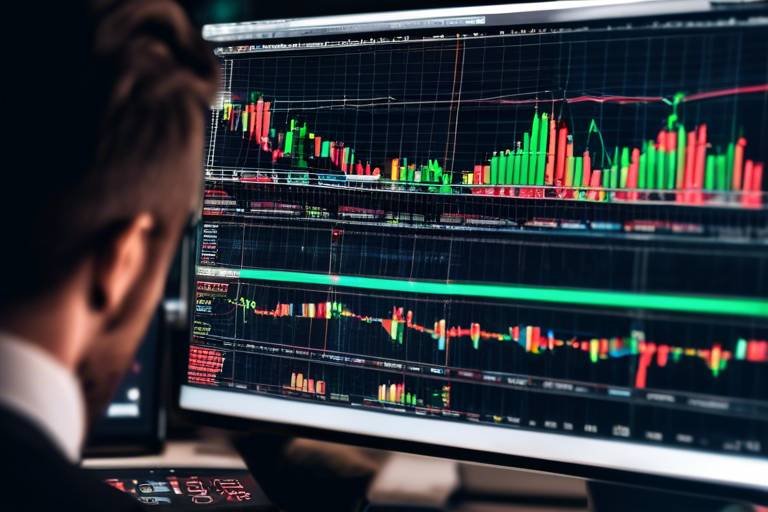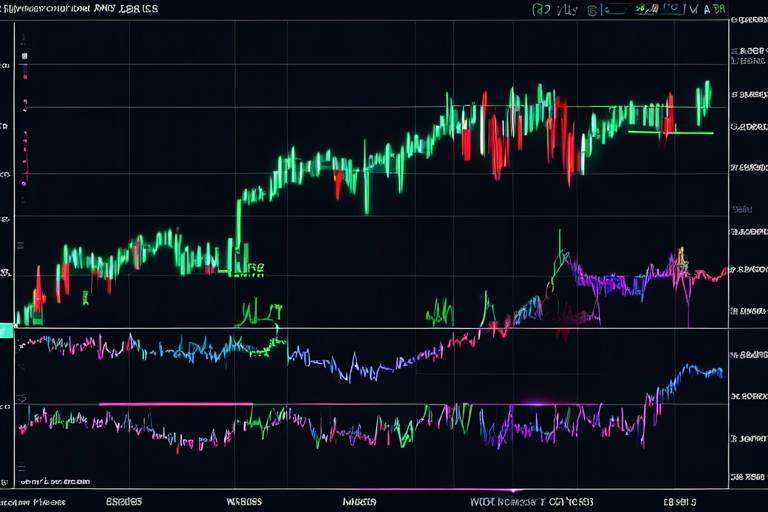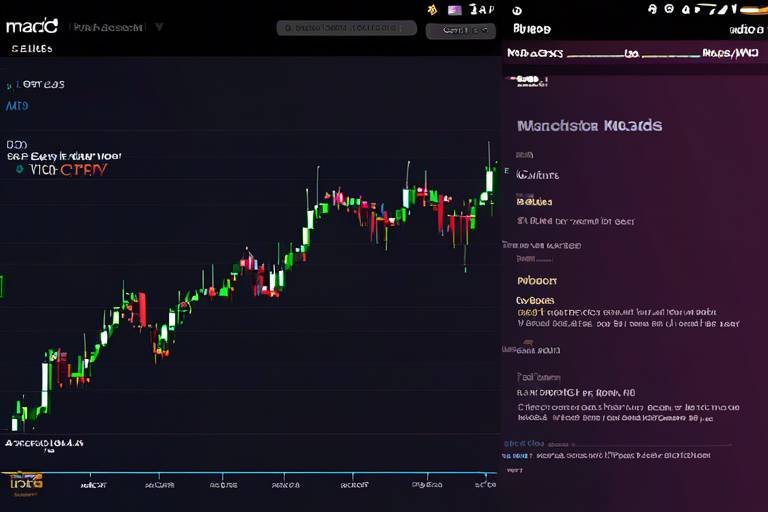Understanding the Role of Technical Analysis in ICO Evaluation
In the fast-paced world of cryptocurrency, initial coin offerings (ICOs) can feel like a rollercoaster ride. With prices soaring one moment and plunging the next, how can investors make sense of it all? Enter technical analysis, a powerful tool that can help decode the chaos. By analyzing price charts and market data, technical analysis allows investors to forecast future price movements, identify trends, and uncover potential investment opportunities. This article will guide you through the essentials of technical analysis and its critical role in evaluating ICOs.
Imagine you're trying to navigate a dense forest without a map. Each tree, each path could lead you to either a treasure or a trap. Technical analysis is like that map, providing you with insights into the landscape of the ICO market. It helps you understand not just where the prices have been, but where they might be headed. With the right indicators and patterns, you can make informed decisions that could significantly impact your investment outcomes.
But why should you care about technical analysis? Well, consider this: the cryptocurrency market is notorious for its volatility. Prices can swing wildly based on news, market sentiment, or even social media buzz. By using technical analysis, you can cut through the noise and focus on the data. It’s not just about guessing which way the market will move; it’s about using historical data to make educated predictions. The goal is to identify buy and sell signals that can maximize your profits and minimize your losses.
Throughout this article, we will explore various aspects of technical analysis, including key indicators like moving averages, the Relative Strength Index (RSI), and chart patterns. Each of these components plays a vital role in helping you evaluate ICOs effectively. By the end, you’ll be equipped with the knowledge to analyze ICOs with confidence and clarity, turning what once felt like a gamble into a calculated investment strategy.
So, are you ready to dive deeper into the fascinating world of technical analysis? Let’s unravel the mysteries and equip you with the tools you need to navigate the ICO landscape like a pro!

What is Technical Analysis?
Technical analysis is a method used to evaluate and forecast the future price movements of assets, particularly in the dynamic world of cryptocurrencies and Initial Coin Offerings (ICOs). It involves the study of past market data, primarily price and volume, to identify patterns and trends that can inform investment decisions. Think of it as reading the pulse of the market; by analyzing charts and indicators, you can gauge whether the market is healthy or on the verge of an upheaval.
At its core, technical analysis operates on the premise that all relevant information is already reflected in the price of an asset. This means that by examining price movements, traders can make educated guesses about where the price might head next. It’s a bit like trying to predict the weather: while you can’t know for sure whether it will rain tomorrow, studying the patterns of clouds and wind can give you a pretty good idea.
In the context of ICOs, technical analysis becomes even more crucial. ICOs are often characterized by their volatility and rapid price fluctuations, making it essential for investors to have a solid grasp of market trends. By employing technical analysis, investors can uncover potential investment opportunities and avoid pitfalls. Here are some key aspects that illustrate the importance of technical analysis in ICO evaluations:
- Market Trends: Technical analysis helps identify whether the market is in a bullish (upward) or bearish (downward) trend, allowing investors to position themselves accordingly.
- Price Movements: By analyzing price charts, investors can spot significant price movements and make timely decisions based on those insights.
- Risk Management: Understanding market patterns can aid in setting stop-loss orders and managing investment risks effectively.
Ultimately, technical analysis is not just about crunching numbers; it’s about understanding the psychology of the market and the behaviors of other traders. It’s a dance of sorts, where every move can signal an opportunity or a warning. In the fast-paced environment of ICOs, having a reliable grasp of technical analysis can mean the difference between a profitable investment and a costly mistake. So, as we delve deeper into the various indicators and tools of technical analysis, keep in mind that mastering these techniques can empower you to navigate the often turbulent waters of ICO investments with greater confidence.

Key Indicators in Technical Analysis
When diving into the world of Initial Coin Offerings (ICOs), understanding the key indicators of technical analysis is paramount. These indicators serve as the compass guiding investors through the turbulent waters of cryptocurrency markets. They help in deciphering market trends, assessing price movements, and making informed investment decisions. Among the myriad of indicators available, a few stand out as essential tools for evaluating ICOs effectively.
First on the list are Moving Averages. These indicators are like the steady heartbeat of a cryptocurrency, smoothing out the price data to reveal the underlying trend. By analyzing the average price over a specific period, investors can determine whether the ICO is in a bullish or bearish phase. But not all moving averages are created equal; that’s where the Simple Moving Average (SMA) and the Exponential Moving Average (EMA) come into play.
The SMA calculates the average price over a set number of days, providing a clear picture of the overall trend. For instance, if you look at a 30-day SMA, you can see how the price has behaved over the last month. It's like looking at the weather forecast—if it’s been sunny for 30 days straight, you can bet it’s likely to stay that way. On the other hand, the EMA gives more weight to recent prices, making it more responsive to new information. This can be particularly useful for traders looking to capitalize on short-term price movements. Think of it as a fresh pair of eyes that focuses on what’s happening right now rather than what happened a month ago.
Another crucial indicator is the Relative Strength Index (RSI). This momentum oscillator measures the speed and change of price movements, helping investors identify overbought or oversold conditions. An RSI value above 70 typically indicates that an ICO might be overbought, while a value below 30 suggests it could be oversold. Understanding these thresholds is vital for making timely entry and exit decisions. After all, who doesn’t want to buy low and sell high?
In addition to these indicators, it’s essential to grasp how they interact with one another. For example, combining moving averages with RSI can provide a more comprehensive picture of market sentiment. If the SMA indicates an upward trend while the RSI shows overbought conditions, it might be time to exercise caution. This interplay of indicators is akin to reading the signs before embarking on a road trip; you wouldn’t just rely on one map but would consider multiple routes to avoid getting lost.
To summarize, the key indicators in technical analysis—such as Moving Averages, SMA, EMA, and RSI—play a significant role in evaluating ICOs. They not only help in identifying trends and price movements but also provide insights into market sentiment. By understanding and utilizing these indicators, investors can navigate the often unpredictable landscape of cryptocurrency investments with greater confidence.

Moving Averages
When it comes to evaluating the performance of Initial Coin Offerings (ICOs), are like a compass guiding investors through the turbulent waters of cryptocurrency markets. They assist in smoothing out price data, allowing traders to identify trends over time without the noise of daily price fluctuations. Think of moving averages as the calm after the storm; they help to filter out the chaos that often surrounds ICO price movements, making it easier to spot the overall direction of the market.
There are two primary types of moving averages that traders often rely on: the Simple Moving Average (SMA) and the Exponential Moving Average (EMA). Each serves a unique purpose and can provide different insights based on the time frame and market conditions. Understanding how to use these tools effectively can significantly enhance your ICO evaluation process.
To illustrate the effectiveness of moving averages, consider the following table that compares the SMA and EMA:
| Feature | Simple Moving Average (SMA) | Exponential Moving Average (EMA) |
|---|---|---|
| Weighting | Equal weight to all prices | More weight to recent prices |
| Responsiveness | Slower to react to price changes | Faster to react to price changes |
| Use Case | Long-term trend analysis | Short-term trend analysis |
Utilizing moving averages in your ICO evaluations can help you answer critical questions like, “Is the current price trend bullish or bearish?” and “Where is the potential support or resistance level?” By observing the crossover points of the SMA and EMA, you can pinpoint potential entry and exit points for your investments. For instance, when the EMA crosses above the SMA, it may signal a buying opportunity, while the opposite could indicate a potential sell signal.
In conclusion, moving averages are invaluable tools in the world of ICO evaluations. They not only assist in identifying trends but also help investors make informed decisions based on historical price data. By mastering the use of both the SMA and EMA, you can significantly improve your ability to navigate the often volatile landscape of cryptocurrency investing.
- What is the primary purpose of moving averages? Moving averages help smooth out price data to identify trends over time, making it easier to evaluate market conditions.
- How do I choose the right moving average for my analysis? The choice between SMA and EMA depends on your investment strategy; SMA is better for long-term trends, while EMA is more suited for short-term analysis.
- Can moving averages predict future price movements? While they can indicate trends, moving averages should be used in conjunction with other indicators for more accurate predictions.

Simple Moving Average (SMA)
The is one of the most fundamental tools in the toolbox of a technical analyst. It’s like a compass for investors navigating the often tumultuous waters of the cryptocurrency market, particularly when evaluating Initial Coin Offerings (ICOs). The SMA calculates the average price of an asset over a specific time period, smoothing out price fluctuations to help identify trends. Imagine trying to find your way through a foggy landscape; the SMA serves as a guiding light, illuminating the path by filtering out the noise of daily price movements.
To calculate the SMA, you simply take the closing prices of an asset over a defined period and divide that total by the number of periods. For example, if you were to calculate a 10-day SMA, you would add the closing prices of the ICO over the last 10 days and then divide that sum by 10. This straightforward calculation can provide valuable insights into the overall trend of an ICO. Here’s a quick look at how the SMA can be structured:
| Day | Closing Price |
|---|---|
| 1 | $1.00 |
| 2 | $1.10 |
| 3 | $1.20 |
| 4 | $1.05 |
| 5 | $1.15 |
| 6 | $1.25 |
| 7 | $1.30 |
| 8 | $1.35 |
| 9 | $1.40 |
| 10 | $1.45 |
In this example, the SMA would be calculated as follows: (1.00 + 1.10 + 1.20 + 1.05 + 1.15 + 1.25 + 1.30 + 1.35 + 1.40 + 1.45) / 10 $1.225. By using the SMA, investors can easily spot whether an ICO is in an uptrend or downtrend. If the current price is above the SMA, it typically indicates bullish sentiment, while a price below the SMA can suggest bearish sentiment.
However, it’s important to remember that while the SMA is a powerful tool, it is not infallible. It can lag behind actual price movements, especially in volatile markets like cryptocurrencies. This lag can sometimes lead to missed opportunities or late entries and exits. Therefore, many traders combine the SMA with other indicators, such as the Exponential Moving Average (EMA) or the Relative Strength Index (RSI), to create a more comprehensive trading strategy.
In conclusion, the Simple Moving Average is a foundational element in technical analysis that helps investors make informed decisions when evaluating ICOs. By providing a clearer picture of price trends, the SMA can help investors navigate the often unpredictable cryptocurrency landscape with greater confidence.

Exponential Moving Average (EMA)
The is a powerful tool in the realm of technical analysis, especially when it comes to evaluating Initial Coin Offerings (ICOs). Unlike the Simple Moving Average (SMA), which treats all price points equally, the EMA gives more weight to the most recent prices. This characteristic makes it particularly effective for capturing the latest market trends and price movements, allowing investors to make more informed decisions.
So, why should you consider using the EMA when evaluating an ICO? Imagine you're trying to predict the weather. If you only looked at yesterday's temperature, you might miss important changes happening today. The EMA acts like a weather vane, adjusting quickly to the latest data, which is crucial in the fast-paced world of cryptocurrency. By focusing on recent price action, the EMA helps traders identify potential entry and exit points with greater precision.
To effectively use the EMA, you need to understand how to calculate it. The formula for the EMA is a bit more complex than that of the SMA, as it involves a smoothing factor. Here’s a simplified breakdown of how to calculate it:
| Step | Description |
|---|---|
| 1 | Calculate the SMA for the first period. |
| 2 | Determine the smoothing factor: 2 / (N + 1), where N is the number of periods. |
| 3 | Apply the EMA formula: EMA (Current Price - Previous EMA) * Smoothing Factor + Previous EMA. |
Once you've calculated the EMA, you can begin to interpret it in the context of ICO evaluations. A rising EMA indicates a bullish trend, while a falling EMA suggests bearish sentiment. Moreover, you can use the EMA in conjunction with other indicators to confirm trends and make more strategic investment decisions. For instance, if the price crosses above the EMA, it may be a signal to buy, while a price drop below the EMA could indicate a sell signal.
Furthermore, many traders employ multiple EMAs (such as the 12-day and 26-day EMAs) to create a more nuanced view of market trends. This strategy, known as the EMA crossover, provides additional confirmation when the shorter EMA crosses above or below the longer EMA, indicating potential buy or sell signals.
In summary, the Exponential Moving Average is a vital component of technical analysis in ICO evaluations. By prioritizing recent price data, it equips investors with the tools to make timely and informed decisions in a highly volatile market. As you delve deeper into the world of ICOs, mastering the EMA can significantly enhance your investment strategy.
- What is the main difference between EMA and SMA? The EMA gives more weight to recent prices, making it more responsive to price changes compared to the SMA, which treats all prices equally.
- How can I use EMA in my trading strategy? You can use EMA to identify trends, confirm buy/sell signals, and even in conjunction with other indicators like RSI or MACD.
- What periods should I use for EMA? Common periods are 12-day and 26-day EMAs for short-term analysis, while 50-day and 200-day EMAs are often used for long-term trends.

Relative Strength Index (RSI)
The is one of the most popular momentum indicators used in technical analysis, and for good reason. It measures the speed and change of price movements on a scale from 0 to 100, providing traders with insights into whether an asset, such as an ICO, is overbought or oversold. Typically, an RSI above 70 indicates that an ICO might be overbought, suggesting a potential price correction, while an RSI below 30 indicates an oversold condition, hinting at a possible price increase. Understanding how to interpret these values can greatly enhance your investment decisions.
When evaluating an ICO with the RSI, it’s essential to look beyond just the numbers. Consider the context of the market and other indicators. For instance, if the RSI is showing an overbought condition but the overall market sentiment is bullish, the price might continue to rise despite the RSI reading. Conversely, a low RSI in a bearish market could signal further declines. Therefore, the RSI should be used in conjunction with other technical analysis tools to form a more comprehensive view.
To better illustrate how the RSI works, let’s take a look at a simple table that outlines the typical interpretations of the RSI values:
| RSI Value | Interpretation |
|---|---|
| 0 - 30 | Oversold - Potential buying opportunity |
| 30 - 50 | Neutral - No clear trend |
| 50 - 70 | Neutral to Overbought - Caution advised |
| 70 - 100 | Overbought - Potential selling opportunity |
Moreover, it’s crucial to recognize that the RSI can also show divergences. A divergence occurs when the price of an ICO is making new highs or lows, but the RSI is not following suit. For example, if the price reaches a new high while the RSI makes a lower high, this could indicate weakening momentum and a potential reversal. This is where the RSI truly shines, providing traders with signals that may not be apparent through price action alone.
In summary, the RSI is a powerful tool in the arsenal of any investor looking to evaluate ICOs. By understanding not just the values but also the context in which they appear, you can make more informed decisions that consider both the current market dynamics and potential future movements. So, the next time you're analyzing an ICO, take a moment to check the RSI—it might just give you the edge you need to navigate the volatile waters of cryptocurrency investments.
- What is the best RSI setting for ICOs? - While the standard setting is 14 periods, some traders adjust this based on their trading strategy and the specific ICO's volatility.
- Can RSI be used on different time frames? - Absolutely! The RSI can be applied to any time frame, but it's essential to consider the context of the timeframe you are trading.
- Is the RSI always accurate? - No indicator is foolproof. The RSI should be used in conjunction with other analysis methods to confirm signals.
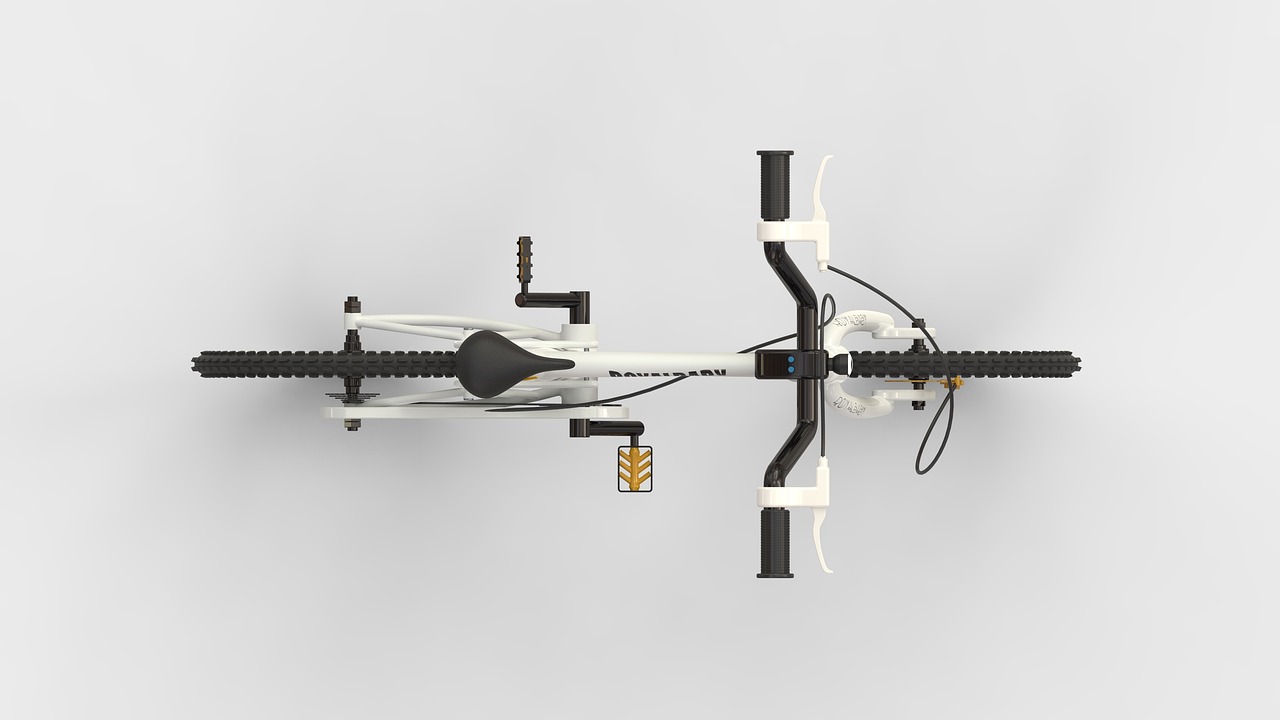
Chart Patterns and Their Significance
When it comes to evaluating Initial Coin Offerings (ICOs), understanding chart patterns is akin to having a treasure map in the vast ocean of cryptocurrency trading. These patterns provide valuable insights into market psychology and can signal potential price movements. Essentially, chart patterns are visual representations of price movements over time, helping traders and investors make informed decisions. By recognizing these patterns, you can gauge whether an ICO is likely to surge or plummet, which is crucial for any savvy investor.
Chart patterns can be broadly categorized into two types: continuation patterns and reversal patterns. Continuation patterns suggest that the current trend will continue, while reversal patterns indicate a potential change in direction. For instance, if you spot a cup and handle pattern, it often signals a bullish continuation, suggesting that the price may rise after a period of consolidation. On the other hand, a head and shoulders pattern can foreshadow a bearish reversal, warning investors to tread carefully.
Here are some common chart patterns that every ICO evaluator should be aware of:
- Head and Shoulders: This pattern typically indicates a reversal from bullish to bearish. It's characterized by three peaks: a higher peak (head) between two lower peaks (shoulders).
- Double Top and Bottom: A double top signals a potential reversal from an uptrend, while a double bottom suggests a reversal from a downtrend.
- Triangles: Triangles can be ascending, descending, or symmetrical, and they often indicate periods of consolidation before a breakout.
Understanding these patterns can significantly enhance your ability to predict market movements. For example, if you notice a symmetrical triangle forming on the price chart of an ICO, you might anticipate a breakout in either direction. This is where your technical analysis skills come into play, as combining chart patterns with other indicators can provide a clearer picture of potential price action.
Moreover, the significance of chart patterns extends beyond mere prediction. They also reflect the collective emotions and behaviors of market participants. When a pattern forms, it often signifies a consensus among traders about the future direction of the asset. This consensus can lead to increased buying or selling pressure, further validating the pattern's implications.
In conclusion, chart patterns are not just random shapes on a price chart; they are powerful tools that can provide insights into market trends and potential price movements. By mastering these patterns, you can enhance your ICO evaluation process and make more informed investment decisions. Remember, the key to successful trading lies in understanding the story that the price chart is telling you!
1. What are chart patterns?
Chart patterns are formations created by the price movements of an asset on a chart, helping traders identify potential future price movements.
2. How can I use chart patterns in ICO evaluation?
By recognizing chart patterns, you can gauge market sentiment and predict potential price movements, aiding in your investment decisions.
3. Are all chart patterns reliable?
While chart patterns can provide valuable insights, they are not foolproof. It's essential to combine them with other technical indicators for better accuracy.
4. Can I apply chart patterns to other financial markets?
Absolutely! Chart patterns are widely used in various financial markets, including stocks, forex, and commodities, making them a versatile tool for traders.

Head and Shoulders
The pattern is one of the most recognized and reliable chart formations in technical analysis, often serving as a strong indicator of potential trend reversals in the market. Imagine you’re climbing a hill, reaching a peak, and then descending again—this is essentially what the Head and Shoulders pattern represents in the price movements of an ICO. It consists of three peaks: a higher peak (the head) between two lower peaks (the shoulders). This formation signals that the upward momentum is weakening, making it a crucial pattern for investors to watch closely.
To identify a Head and Shoulders pattern, you need to look out for the following characteristics:
- Left Shoulder: The price rises to a peak and then declines.
- Head: The price rises again to a higher peak and then declines.
- Right Shoulder: The price rises once more, but this time to a lower peak than the head, followed by a decline.
Once this pattern is established, it’s essential to draw a neckline—a horizontal line that connects the lows of the two troughs (the declines following the left shoulder and head). A break below this neckline is typically considered a confirmation of the reversal, suggesting that the ICO's price may continue to decline. This can be a critical moment for investors, as it may indicate that the bullish phase is over, and a bearish trend is beginning.
For those looking to make informed decisions, understanding the implications of the Head and Shoulders pattern is vital. It’s not just about recognizing the pattern; it’s also about timing your entry and exit points. Traders often look for additional confirmation signals, such as increased trading volume as the price breaks the neckline, to strengthen their conviction in the trade. This combination of technical analysis and market sentiment can significantly enhance the effectiveness of your ICO evaluations.
In summary, the Head and Shoulders pattern serves as a powerful tool for predicting market reversals. By paying attention to the formation and the subsequent price action, investors can position themselves advantageously in the ever-evolving landscape of ICOs. Remember, though, that no pattern is foolproof; it’s always wise to consider other indicators and market conditions before making investment decisions.
- What does the Head and Shoulders pattern indicate? It typically indicates a potential reversal in the market trend from bullish to bearish.
- How can I confirm a Head and Shoulders pattern? Look for a break below the neckline accompanied by increased trading volume.
- Can the Head and Shoulders pattern fail? Yes, like any technical indicator, it can produce false signals, so it’s essential to use it in conjunction with other analysis methods.
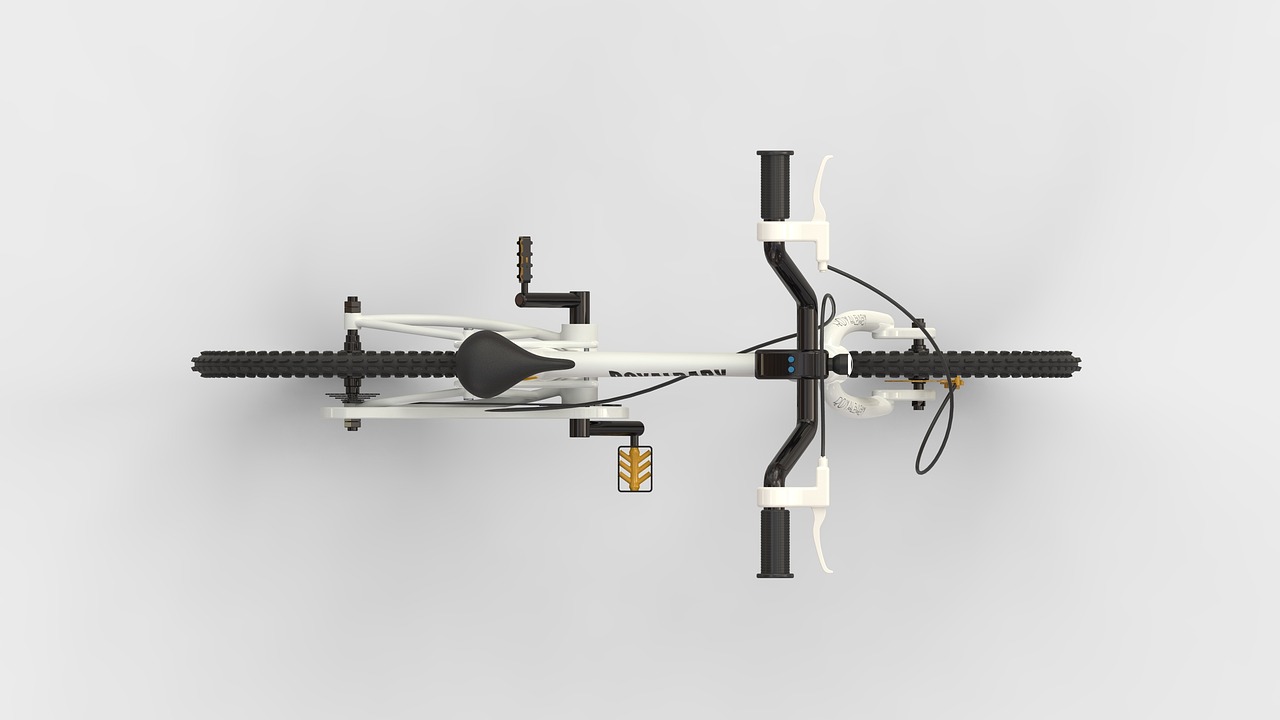
Triangles
Triangles are fascinating formations that occur frequently in the world of technical analysis, particularly when evaluating Initial Coin Offerings (ICOs). These patterns often indicate periods of consolidation, where price movements narrow down, creating a triangular shape on the chart. Understanding triangles can be pivotal for investors looking to predict potential breakouts or breakdowns in price. So, how can you leverage these patterns in your ICO evaluations? Let's dive deeper!
There are three main types of triangle patterns that traders often encounter: ascending triangles, descending triangles, and symmetric triangles. Each of these patterns has its own unique characteristics and implications for price movement:
- Ascending Triangles: These patterns typically signal a bullish sentiment in the market. They are characterized by a horizontal resistance line at the top and an upward-sloping support line at the bottom. This formation suggests that buyers are increasingly willing to pay higher prices, indicating potential upward momentum.
- Descending Triangles: In contrast, descending triangles are often viewed as bearish patterns. They feature a horizontal support line at the bottom and a downward-sloping resistance line at the top. This setup indicates that sellers are pushing prices down, which may lead to a price drop when the support level is breached.
- Symmetric Triangles: This type of triangle is marked by both upward and downward sloping trendlines converging towards a point. Symmetric triangles signify indecision in the market, where neither buyers nor sellers have the upper hand. The breakout direction can be either bullish or bearish, making it crucial for traders to stay alert.
Identifying these triangle patterns can be a game-changer for ICO investors. For instance, when you spot an ascending triangle forming on an ICO’s price chart, it might be time to consider entering a position, especially if the price breaks above the resistance level with strong volume. Conversely, if you see a descending triangle, it may be wise to reassess your position or even consider exiting before a potential downturn.
Moreover, the duration of the triangle formation can also provide insights into the strength of the breakout. Generally, the longer the price consolidates within the triangle, the more significant the subsequent breakout is likely to be. This is akin to a pressure cooker; the longer you keep the lid on, the more explosive the release will be once it’s finally let loose!
In summary, triangles are not just random shapes; they are powerful indicators that can help you gauge market sentiment and potential price movements in ICOs. By mastering the art of triangle identification and interpretation, you can enhance your investment strategy and make more informed decisions in the ever-evolving landscape of cryptocurrencies.
- What is the significance of triangle patterns in ICO analysis? Triangle patterns help traders identify potential breakout or breakdown points, guiding investment decisions based on market sentiment.
- How can I identify a triangle pattern on a price chart? Look for converging trendlines, where price movements narrow down, forming a triangular shape. Pay attention to the slope of the lines to determine the type of triangle.
- What should I do when I see a triangle pattern forming? Monitor the price closely for a breakout or breakdown. Use other indicators, such as volume analysis, to confirm the strength of the move.

Volume Analysis in ICO Evaluation
When diving into the exciting world of Initial Coin Offerings (ICOs), one critical aspect that often gets overlooked is volume analysis. You might wonder, why is volume so important? Well, think of volume as the heartbeat of the market. It reveals how actively a cryptocurrency is being traded and can provide invaluable insights into the strength of price movements. In the realm of ICOs, understanding volume can be the difference between making a sound investment and getting caught in a market trap.
Volume analysis is essential for validating price movements. For instance, if the price of an ICO token is rising but the trading volume is low, it could indicate that the price increase is not supported by strong demand. Conversely, a price increase accompanied by high trading volume suggests that there is genuine interest from investors, which can be a positive sign. This relationship between price and volume is crucial for anyone looking to assess the potential of an ICO.
To better understand volume analysis, we can break it down into two main components: volume trends and the On-Balance Volume (OBV) indicator. By examining these elements, investors can gain a clearer picture of market sentiment and make more informed decisions.
Understanding volume trends can provide insights into market sentiment. When analyzing ICOs, it's important to look at how volume changes over time. For example, if you notice that the volume is consistently increasing as the price rises, this could indicate a strong bullish trend. On the other hand, if the volume is decreasing while the price is rising, it might signal that the upward movement is losing steam, which could lead to a price correction.
Here are a few key points to consider when analyzing volume trends:
- Increasing Volume with Rising Prices: This is generally a bullish sign, indicating strong buyer interest.
- Decreasing Volume with Rising Prices: This can be a warning sign that the rally may not be sustainable.
- Increasing Volume with Falling Prices: This suggests that sellers are becoming more aggressive, which could lead to further declines.
- Low Volume during Price Consolidation: This indicates that the market is in a state of indecision, and a breakout could be on the horizon.
On-Balance Volume is another powerful tool that can aid in assessing the strength of an ICO's price movement. OBV combines price and volume to create a single line that helps determine the overall trend. The concept is simple: when the price increases, the volume is added to the OBV, and when the price decreases, the volume is subtracted. This creates a cumulative total that reflects buying and selling pressure.
Investors can use OBV to identify potential buy or sell signals. For instance, if the OBV is rising while the price is falling, it could indicate that the market is accumulating the asset, and a price increase might follow. Conversely, if the OBV is declining while the price is rising, it may suggest that the current price increase is not supported by strong buying interest, which could lead to a reversal.
In summary, volume analysis is a vital component of ICO evaluation. By understanding volume trends and utilizing indicators like On-Balance Volume, investors can gain a deeper insight into market dynamics, helping them make more informed decisions. As with any investment strategy, combining volume analysis with other forms of technical analysis can lead to a more holistic approach to assessing ICOs.
Q: Why is volume important in ICO evaluation?
A: Volume is crucial as it indicates the level of interest and activity in a cryptocurrency. High trading volume can validate price movements, while low volume may suggest a lack of support for price changes.
Q: What does increasing volume with rising prices indicate?
A: This generally indicates strong buyer interest and a bullish trend, suggesting that the price increase is supported by demand.
Q: How can On-Balance Volume (OBV) help in my analysis?
A: OBV helps to measure buying and selling pressure by combining price and volume. It can provide insights into potential price movements based on market sentiment.
Q: Should I rely solely on volume analysis for ICO investments?
A: While volume analysis is important, it should be used in conjunction with other technical analysis tools to get a comprehensive view of the market.

Volume Trends
Understanding is akin to having a compass in the unpredictable seas of the cryptocurrency market. Just as sailors rely on their instruments to navigate treacherous waters, investors can use volume trends to gauge market sentiment and make informed decisions regarding Initial Coin Offerings (ICOs). Volume, which refers to the number of tokens traded within a specific timeframe, is a powerful indicator of the strength or weakness of a price movement. When analyzing ICOs, it's essential to look beyond just the price; the volume can reveal underlying trends that might not be immediately apparent.
For instance, if an ICO is experiencing a price increase accompanied by a significant rise in trading volume, it suggests that there’s strong buying interest and confidence in the project. Conversely, if prices are soaring but volume is low, it may indicate that the rally is not supported by substantial market interest, potentially signaling a price correction ahead. This is why monitoring volume trends can help investors avoid falling into the trap of false breakouts or unsustainable price spikes.
To effectively analyze volume trends, investors should consider the following factors:
- Volume Spikes: Sudden increases in volume can indicate a shift in market sentiment, often preceding significant price movements.
- Volume Patterns: Consistent patterns in trading volume can help identify the strength of a trend. For example, increasing volume during an uptrend suggests a healthy market, while decreasing volume during a downtrend may indicate a lack of selling pressure.
- Comparative Volume: Comparing the current volume to historical averages can provide context. A volume higher than the average could indicate heightened interest in the ICO.
In summary, volume trends are an essential component of technical analysis in ICO evaluations. They offer insights into market dynamics that price alone cannot provide. By paying close attention to volume alongside price movements, investors can better position themselves to capitalize on potential opportunities and mitigate risks. Ultimately, understanding volume trends can empower investors to make more strategic decisions in the ever-evolving landscape of cryptocurrency investments.

On-Balance Volume (OBV)
The is a powerful momentum indicator that plays a crucial role in the evaluation of Initial Coin Offerings (ICOs). Essentially, OBV combines price movement with volume to provide a clearer picture of market sentiment. The basic premise is simple: if a cryptocurrency's price is increasing and the volume is also rising, it indicates strong buying pressure. Conversely, if the price is rising but the volume is falling, it raises a red flag about the sustainability of that price increase. Understanding OBV can help investors make informed decisions based on the underlying strength or weakness of an ICO's price movements.
To calculate OBV, you start with a baseline of zero and then add or subtract the volume for each trading period based on the price movement. If the price closes higher than the previous period, you add the current volume to the OBV. If it closes lower, you subtract the volume. This method allows you to track the cumulative volume and visualize trends over time. The formula can be summarized as follows:
| Price Movement | Action |
|---|---|
| Price closes higher | Add current volume to OBV |
| Price closes lower | Subtract current volume from OBV |
When analyzing OBV, investors should look for divergences between the OBV line and the price action. For instance, if the price of an ICO is making new highs while the OBV is not, this could suggest that the upward price movement is not backed by sufficient buying interest, hinting at a potential reversal. Similarly, if the price is declining but OBV is rising, it could indicate that selling pressure is weakening and a price rebound might be on the horizon.
In the context of ICOs, where volatility is often high, using OBV can help investors gauge whether the market is genuinely bullish or if the excitement is merely a facade. It's important to remember that while OBV is a valuable tool, it should not be used in isolation. Pairing OBV with other indicators like moving averages and RSI can provide a more comprehensive view of market conditions, helping you make smarter investment choices.
In summary, the On-Balance Volume indicator is an essential part of the technical analysis toolkit for evaluating ICOs. By understanding how to interpret OBV, you can gain insights into market dynamics, validate price movements, and ultimately enhance your investment strategy.
- What is OBV in cryptocurrency trading?
OBV stands for On-Balance Volume, a momentum indicator that correlates volume with price changes to gauge market sentiment. - How do I calculate OBV?
To calculate OBV, start with a baseline of zero and adjust it based on whether the price closes higher or lower than the previous period, adding or subtracting the current volume accordingly. - Can OBV predict market trends?
Yes, OBV can help identify trends by showing whether price movements are supported by volume, indicating the strength of the trend. - Should I use OBV alone for ICO evaluation?
No, it's best to use OBV in conjunction with other indicators like moving averages and RSI for a more rounded analysis.
Frequently Asked Questions
- What is technical analysis and why is it important for ICO evaluations?
Technical analysis is a method used to evaluate investments by analyzing price charts and market data. It helps investors forecast future price movements based on historical data. In the context of ICO evaluations, it becomes crucial as it allows potential investors to identify trends, make informed decisions, and assess the viability of an ICO before committing their funds.
- What are the key indicators used in technical analysis for ICOs?
Some of the key indicators include Moving Averages (both Simple and Exponential), Relative Strength Index (RSI), and various chart patterns. These indicators help in understanding market sentiment, trend direction, and potential price reversals, which are essential for making sound investment decisions in the volatile ICO market.
- How do moving averages assist in evaluating ICO performance?
Moving averages smooth out price data to help identify trends over time. A Simple Moving Average (SMA) can indicate the overall trend direction, while an Exponential Moving Average (EMA) gives more weight to recent prices, making it useful for spotting short-term price movements. By analyzing these averages, investors can better understand the momentum of an ICO.
- What is the significance of the Relative Strength Index (RSI) in ICO investments?
The RSI is a momentum oscillator that measures the speed and change of price movements. It ranges from 0 to 100 and helps investors identify overbought or oversold conditions. A high RSI might suggest that an ICO is overbought and could see a price correction, while a low RSI may indicate an oversold condition, potentially presenting a buying opportunity.
- Can you explain the importance of volume analysis in evaluating ICOs?
Volume analysis is crucial as it validates price movements. High trading volume during a price increase can indicate strong market interest, while low volume could suggest a lack of conviction. Analyzing volume trends alongside price movements helps investors gauge market sentiment and the strength of an ICO's price action.
- What are some common chart patterns to look for when evaluating ICOs?
Common chart patterns include Head and Shoulders, which can indicate potential trend reversals, and Triangle patterns, which signify periods of consolidation before a breakout. Recognizing these patterns can provide valuable insights into future price movements, helping investors make more informed decisions.


